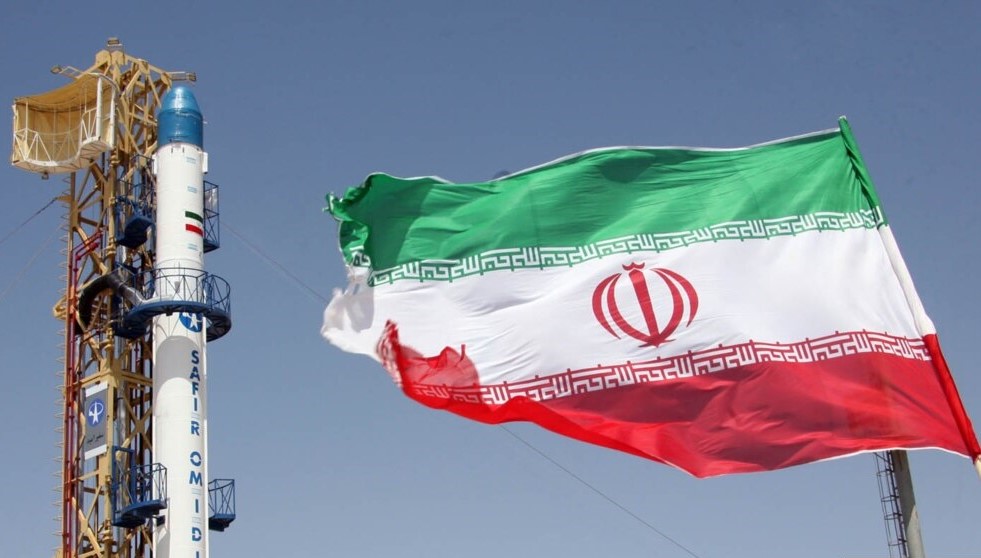Iran's Minister of Communications and Information Technology Isa Zarepour has said that the domestically made Nahid-1 and Nahid-2 telecommunications satellites will be launched into orbit by March 2023.
Zarepour added that "other satellites are also in line to be launched," according to the Iranian state news agency IRNA.
Nahid-1 was unveiled in February 2017, and Iran reportedly failed to launch the satellite in August 2019, as the satellite imagery from the NPR news agency showed smoke billowing from the launch pad at the Imam Khomeini Space Center in northern Iran. However, Iran rejected the reports.
Iran's Islamic Revolution Guards Corps (IRGC) Aerospace Force Commander Amir Ali Hajizadeh said on November 20 that Iran would use its new Qaem-100 satellite launch vehicle (SLV) to put a satellite into orbit in the next few months.
In early November, the Aerospace Force of the IRGC announced the successful launch of the Qaem 100 three-stage solid fuel suborbital carrier. Qaem 100, the first of its kind manufactured by Iranian scientists, is capable of putting satellites weighing up to 80 kilograms into orbit 500 kilometers from the earth's surface. The vehicle’s solid-fueled first-stage engine, which had been subjected to ground tests earlier this year, completed its first suborbital spaceflight on November 5.
Tehran has both a civilian and military space program, which the US fears could be used to advance Iran's ballistic missile program. Tehran insists its space program is for civilian and defense purposes only and does not breach the 2015 nuclear deal, or any other international agreement.
Western governments worry that satellite launch systems incorporate technologies interchangeable with those used in ballistic missiles capable of delivering a nuclear warhead, something Iran has always denied.
Meanwhile, on December 14, the Iranian Space Agency (ISA) and its Russian counterpart, Roscosmos, signed a memorandum of understanding to cooperate in building satellites and related infrastructure. The agreement provides for cooperation in building remote sensing satellites and communications satellites as well as infrastructure for satellite assembly, launching, and testing.
The Director-General of Roscosmos, Yuri Borisov said during the ceremony that one of the joint goals was to send an astronaut to a "Russian Space Station" - presumably a new station to be constructed as a result of Russia's uncertain plans to withdraw from the International Space Station as early as 2025.
The previous Roscosmos head, Dmitry Rogozin, said this June that talks on extending the work of the ISS beyond 2024 could be resumed only if US sanctions against the Russian space sector were lifted.
ISA Chief Hassan Salariyeh said in late August that the ISA was in talks with Russian officials about sending Iranians into space.
A significant step in cooperation between Iran and Russia came in August with the launch of Iran's Khayyam remote sensing satellite. The Khayyam satellite which was built and launched by Russia on behalf of Iran had been lofted into orbit from the Baikonur cosmodrome in Kazakhstan on August 9.
The Iranian Space Agency has announced that the satellite will be used for agriculture and water resources planning and the Russian embassy in Tehran said the spacecraft was devised for non-military purposes.
The launch of the Khayyam satellite jointly with Russia drew criticism after reports that Moscow intended to use it to monitor military targets in Ukraine before handing over control to Iran, but the Iranian Space Agency denied these reports.







 The number of evacuees from flooded areas in Kazakhstan has reached 97,852 people, including about 32,856 children since March 27.
The number of evacuees from flooded areas in Kazakhstan has reached 97,852 people, including about 32,856 children since March 27.
 The Islamic holy month of fasting, Ramadan comes to an end this week with the celebration of a joyous festival called Eid (meaning “festival” in Ar...
The Islamic holy month of fasting, Ramadan comes to an end this week with the celebration of a joyous festival called Eid (meaning “festival” in Ar...
 Iran's senior military leaders described the drone and missile attack on Israel on April 14 night as “successful".
Iran's senior military leaders described the drone and missile attack on Israel on April 14 night as “successful".
 Azerbaijan officially unveiled the logo for the upcoming 29th session of the Conference of the Parties to the United Nations Framework Convention o...
Azerbaijan officially unveiled the logo for the upcoming 29th session of the Conference of the Parties to the United Nations Framework Convention o...



